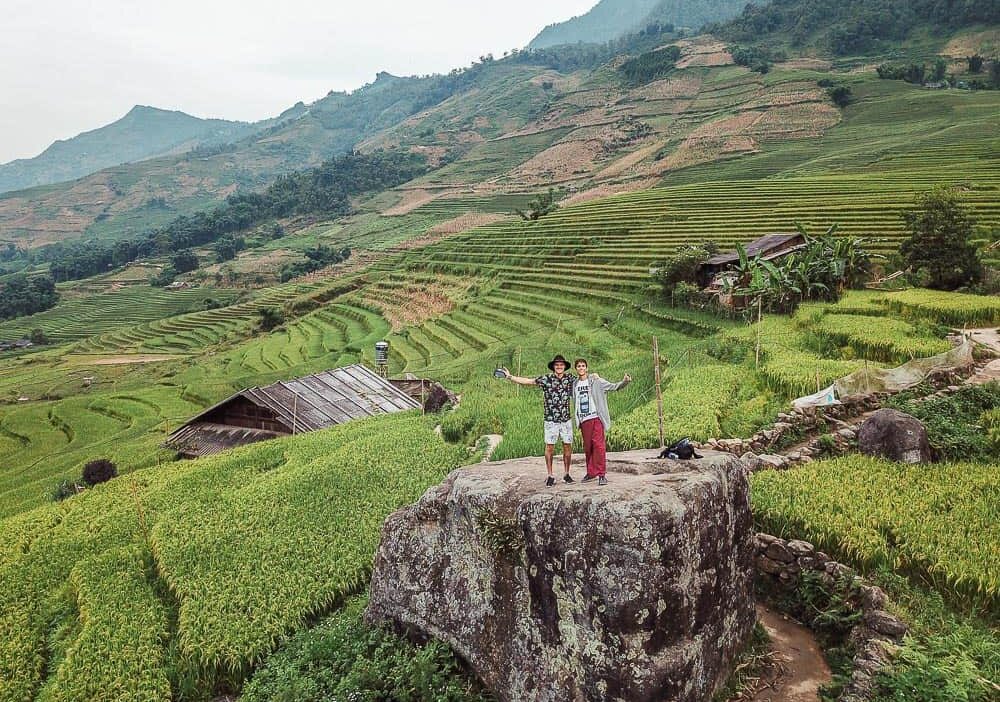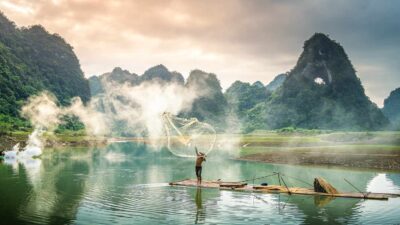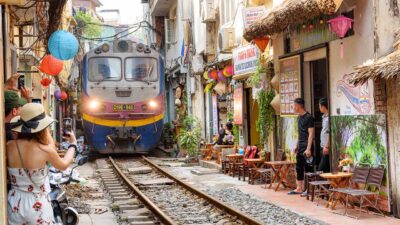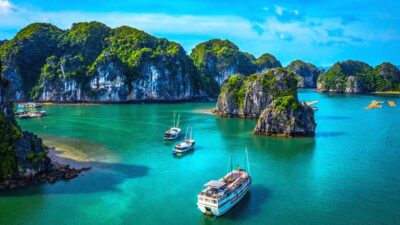Embarking on a Vietnam backpacking route is more than just a journey—it’s an immersive adventure through one of Southeast Asia’s most diverse and dynamic countries. Over 12 days and five distinct stops, you’ll traverse mist-shrouded karst landscapes, cycle through terraced rice fields, lounge on sun-soaked beaches, and unwind in tropical island paradises. Whether you’re a first-time solo traveler or an experienced duo seeking the off-beat path, this itinerary will help you craft an unforgettable Vietnamese odyssey.
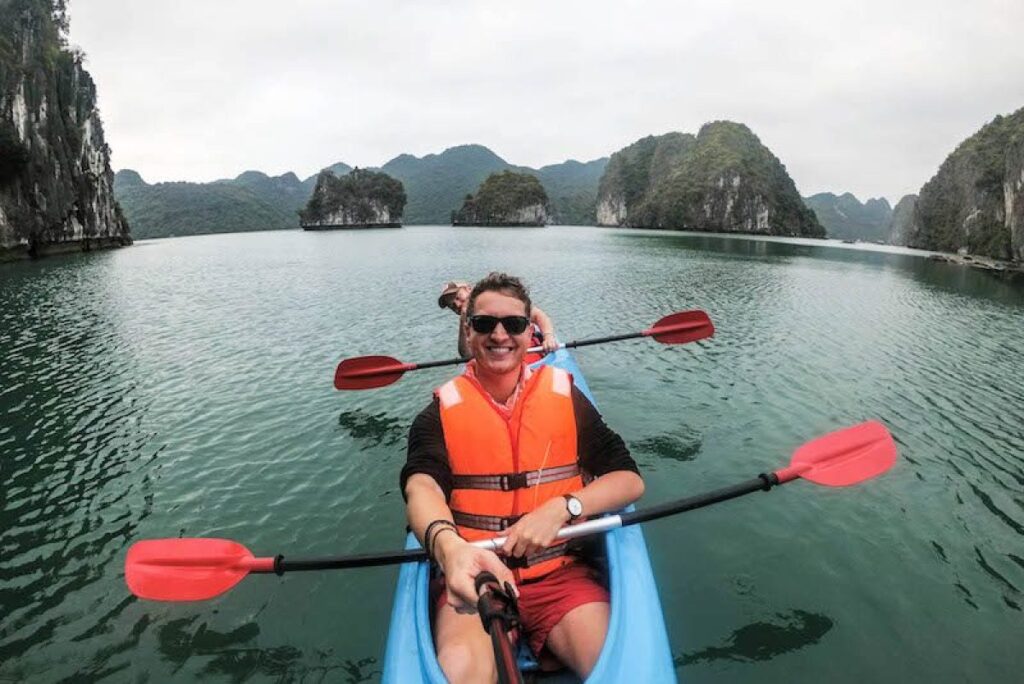
1. Why Choose This Vietnam Backpacking Route?
- Budget-Friendly Adventures
Backpacking in Vietnam is remarkably affordable. Sleeper buses, soft-berth trains, and local guesthouses let you stretch your budget, leaving more funds for experiences rather than transport and lodging. Daily street-food feasts cost as little as US$3–5 per meal, and homestays often include home-cooked breakfasts in the room rate. - Curated Iconic Highlights
This Vietnam backpacking route incorporates UNESCO World Heritage Sites (Tràng An), the famed golden rice terraces of Mù Cang Chải, the lush Pù Luông Nature Reserve, Nha Trang’s offshore islands, and Phú Quốc’s pristine beaches. You’ll tick off bucket-list destinations while enjoying hidden gems off the typical tourist grid. - Efficient North-to-South Flow
Designed to minimize backtracking, the itinerary moves logically from Northern Vietnam’s karst wonderland through northwest highland scenery, dips into the north-central forests, then down to the central coast and finally the southern islands. Strategic overnight travel maximizes daylight exploration. - Flexibility & Personalization
Each stop includes optional activity upgrades—motorbike loops in mountain passes, homestay bookings with local families, private boat charters for snorkeling, and spa experiences. You can tweak the number of nights per destination or insert side trips (e.g., Hue & Hoi An) without disrupting the overall flow. - Rich Cultural Immersion
Beyond natural beauty, you’ll engage deeply with Vietnamese culture: sampan boat rides through ancient grottoes, H’Mông homestays, Thai-village cooking classes, and late-night seafood barbecues under lantern light. This Vietnam backpacking route balances adventure with authenticity.
2. At-A-Glance Route Overview
| Stop | Destination | Region | Days | Key Activities |
| 1 | Tràng An & Ninh Bình | Northern Vietnam | 2 | Sampan boat tour, cycling, cave hikes |
| 2 | Mù Cang Chải & Yên Bái | Northwest Highlands | 2 | Sunrise terrace viewing, H’Mông homestay, motorbike |
| 3 | Pù Luông & Thanh Hóa | North-Central | 2 | Jungle treks, waterfall swims, rice-field huts |
| 4 | Nha Trang Beaches | Central Coast | 3 | Island-hopping, snorkeling, mud-bath spas |
| 5 | Phú Quốc Island | Southern Coast | 3 | Coral reef dives, waterfall hikes, night markets |
This Vietnam backpacking route spans approximately 1,700 kilometers, combining overland and short domestic flights for optimal efficiency. Use this table as a quick reference before diving into the detailed day-by-day plan.
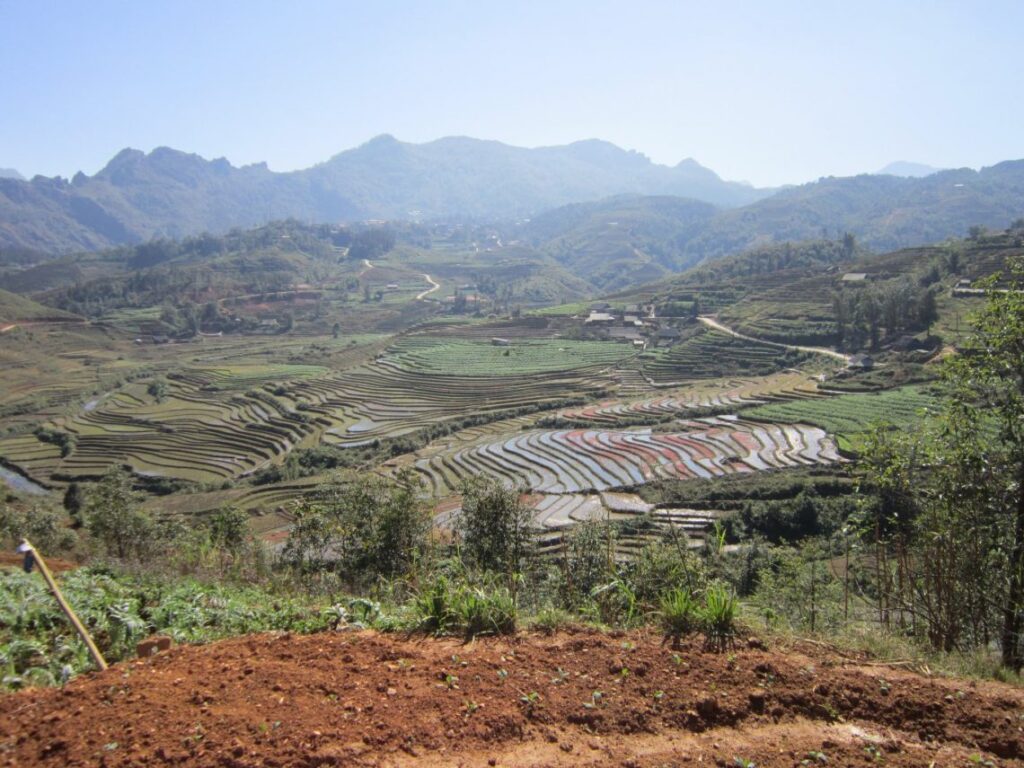
3. Day-By-Day Itinerary
Stop 1: Tràng An & Ninh Bình (Days 1–2)
Day 1: Arrival and Tràng An Exploration
- Morning: Depart Hanoi at dawn via open-tour minibus or private shuttle (≈2.5 hours, US$6–8). Check in at a riverside guesthouse in Tràng An.
- Late Morning: Board a traditional bamboo sampan for the UNESCO-listed Tràng An Landscape Complex . Glide beneath karst cliffs, pass hidden temples (Đền Trần, Đền Tứ Trụ), and through Giao Thủy Cave’s winding waterway.
- Afternoon: Rent a bicycle (₫50,000/day) and pedal scenic lanes flanked by emerald paddies. Stop at Múa Cave viewpoint—climb 486 stone steps for panoramic vistas of the karst panorama.
- Evening: Wander the Ninh Bình night market for bò nướng lá lốt (beef in lolot leaf) and ốc núi (river snails). Early rest for next day’s train.
Day 2: Transition to Mù Cang Chải
- Morning: Quick sunrise photo at the riverside before departing to Ninh Bình station for the overnight train to Yên Bái (soft-berth, ≈9 hours, US$15–25).
- Tip: Book tickets via Baolau or 12Go Asia at least two weeks ahead to secure lower berths.
Stop 2: Mù Cang Chải & Yên Bái (Days 3–4)
Day 3: Golden Terraces and Hill-Tribe Homestay
- Early Morning: Arrive Yên Bái, transfer by local bus to Mù Cang Chải (≈3 hours). Check in to a H’Mông stilt-house homestay near Tú Lệ (₫200,000–300,000/night).
- Midday: Village lunch of cá suối nướng (grilled stream fish) and cơm lam (bamboo-cooked rice).
- Afternoon: Hire a local guide and 125 cc motorbike for a loop through La Pán Tẩn and Khau Phạ passes. Stop at viewpoints for the famed golden-season terraces (best mid-Sept to mid-Oct).
- Sunset: Capture fiery skies over cascading paddies from the “Mùa Vàng” lookout.
Day 4: Cultural Immersion and Onward to Pù Luông
- Morning: Participate in a rice-planting or silver-rice tasting activity with a H’Mông family.
- Late Morning: Depart by minibus to Thanh Hóa city (≈5 hours, US$10).
- Evening: Relax in Thanh Hóa hotel; gear up for next day’s trek into Pù Luông.
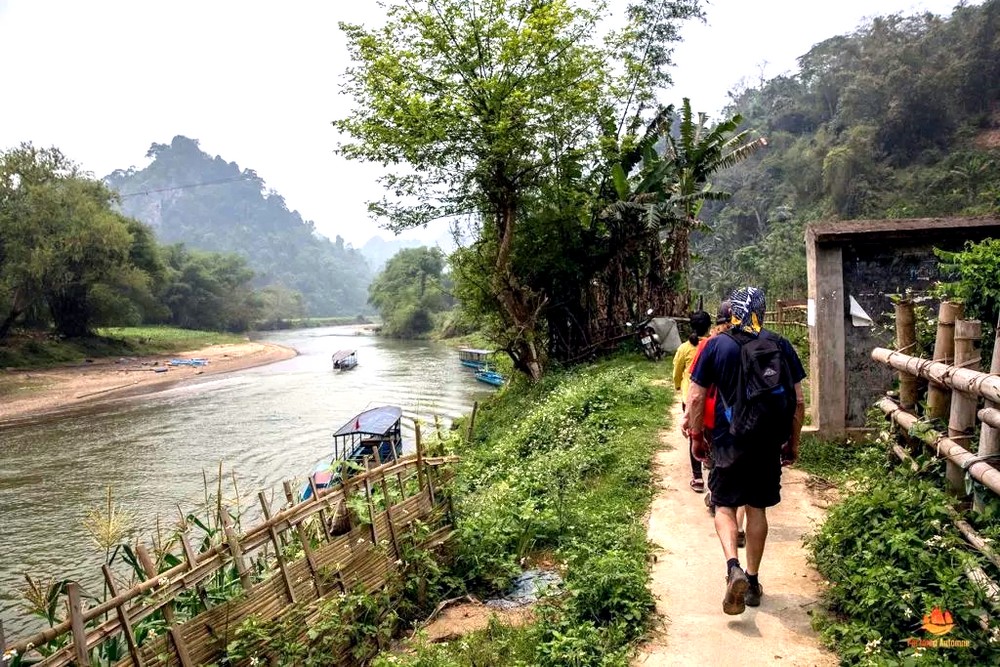
Stop 3: Pù Luông & Thanh Hóa (Days 5–6)
Day 5: Jungle Trails and Waterfalls
- Morning: Transfer (≈1.5 hours) to Pù Luông Nature Reserve. Check in at a bamboo terrace-hut homestay overlooking neon-green fields (₫250,000–350,000).
- Late Morning: Guided trek through primary forest trails in the reserve. Spot endemic orchids, monitor lizards, and cascading streams.
- Afternoon: Cool off with a swim at Kho Mu waterfall; picnic lunch by the pool.
- Evening: Traditional dinner prepared by Thai villagers—try xôi ngũ sắc (five-color sticky rice).
Day 6: Sunrise Over the Terraces and Departure
- Early Morning: Catch the sunrise at Cổng Trời (Heaven’s Gate) viewpoint, where sea-of-clouds vistas unfold over the valley.
- Midday: Return to Thanh Hóa city by shuttle; afternoon bus or train (soft-berth) to Nha Trang (≈12–14 hours, US$25–35).
Stop 4: Nha Trang Beaches (Days 7–9)
Day 7: Island Hopping & Snorkeling
- Morning: Arrive Nha Trang’s beachside hostels/hotels (₫200,000–500,000/night). Join a day cruise (₫500,000–700,000) to Hòn Mun Marine Park, Bình Ba, and Bình Hưng.
- Activities: Snorkel vibrant coral reefs, kayak to hidden coves, and enjoy a seafood barbecue on a secluded islet.
- Evening: Sample bánh xèo Nha Trang (crispy rice pancake) at the night market.
Day 8: Water Sports & Wellness
- Morning: Choose between parasailing, jet-skiing, or introductory scuba dive (licensed tours start at US$30).
- Afternoon: Indulge in mineral mud baths and hot springs at Tháp Bà Spa (₫200,000 entry).
- Sunset: Stroll the illuminated seaside promenade; sip cà phê trứng (egg coffee) with a view.
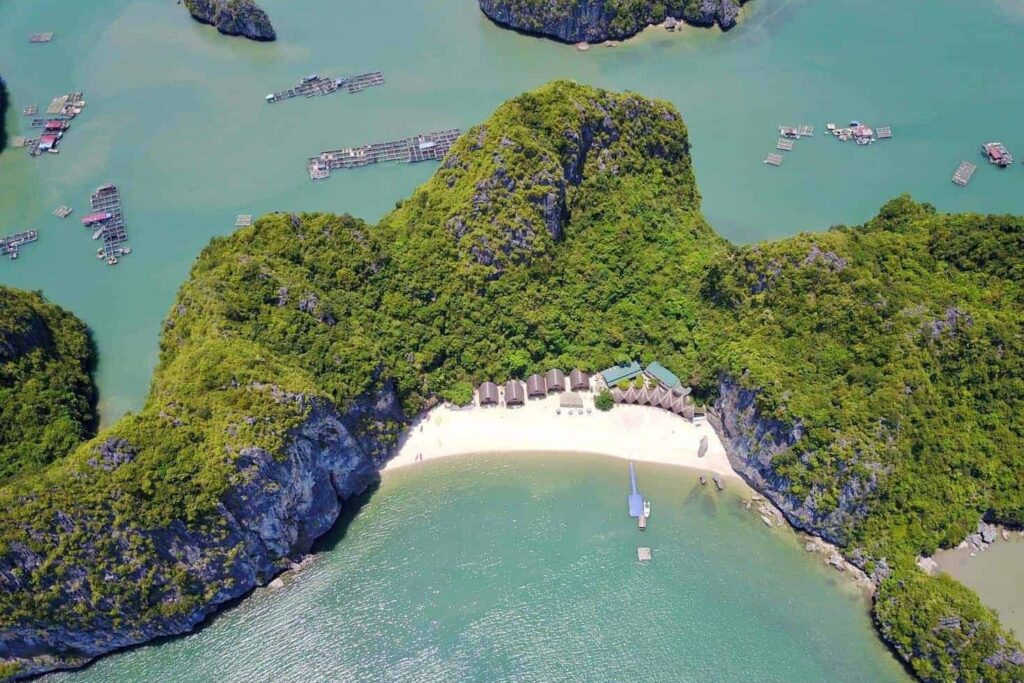
Day 9: Leisure & Flight to Phú Quốc
- Morning: Beach time at Tran Phu Beach; optional visit to Long Sơn Pagoda.
- Afternoon: Flight from Cam Ranh Airport to Phú Quốc (≈1.5 hours, US$30–50 when booked early).
- Evening: Arrive Dương Đông Town; settle into a beachfront bungalow (₫400,000–800,000).
Stop 5: Phú Quốc Island (Days 10–12)
Day 10: Coral Reefs and Sunset Views
- Morning: Private boat charter around An Thới archipelago (US$100–150 split among group). Snorkel at Hòn Móng Tay and Hòn Dăm Ngang.
- Afternoon: Lounge on Bai Sao Beach—renowned for powder-white sand and turquoise waters.
- Sunset: Head to Dinh Cậu Temple rock outcrop for golden-hour panoramas and local legends.
Day 11: Jungle Hike & Night Market Feast
- Morning: Guided trek in Phú Quốc National Park to Suối Tranh waterfall. Cool off in natural pools.
- Afternoon: Visit a pepper farm for tasting and buy fresh spice sachets.
- Evening: Explore Dinh Cậu Night Market—feast on grilled lobster, sea urchin, and sip local rice-wine.
Day 12: Departure
- Morning: Optional sunrise yoga on the beach or visit Vinpearl Safari for wildlife encounters.
- Midday: Flight back to Ho Chi Minh City or Hanoi, depending on onward itinerary.
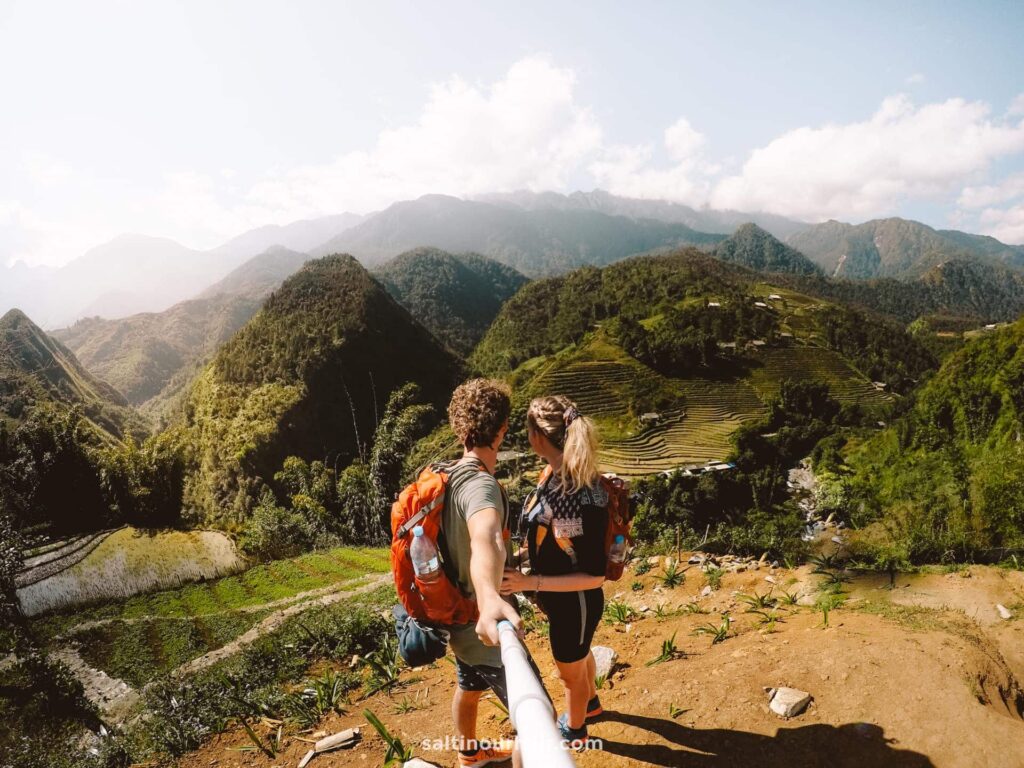
4. Logistics & Transport Tips
- Sleeper Buses & Trains: Book “soft-berth” sleeper trains for comfort on long legs (Hanoi→Yên Bái→Nha Trang). Buses are cheaper but less spacious.
- Domestic Flights: Check VietJet Air, Bamboo Airways, and Vietnam Airlines for early-bird fares as low as US$25. Book 6–8 weeks in advance, especially for Nha Trang↔Phú Quốc.
- Motorbike Rentals: In Mù Cang Chải and Pù Luông, rent 125 cc bikes (₫150,000–200,000/day). Inspect brakes, clutch, lights; carry basic tool kit.
- Advance Booking Platforms: Use 12Go Asia or Baolau for transparent schedules and guaranteed tickets.
- Local SIM & Connectivity: Purchase a Viettel/Mobifone SIM at airports for US$5–7 with 5–10 GB data. Wi-Fi is often available in guesthouses and cafés.
5. Budgeting Your Trip
| Category | Estimated Cost (US$) |
| Accommodation (12 n) | 12 × US$10–20 (Mix of hostels & homestays) |
| Transport | US$120–200 (Trains, buses, flights) |
| Food & Drink | US$10–20/day |
| Activities & Tours | US$150–250 total |
| Miscellaneous | US$50–100 (SIM, laundry, tips) |
| Total (12 days) | US$500–750 per person |
Even on the higher end, under US$1,000 for 12 days covers all essentials plus key experiences—a testament to why a Vietnam backpacking route is ideal for budget travelers.
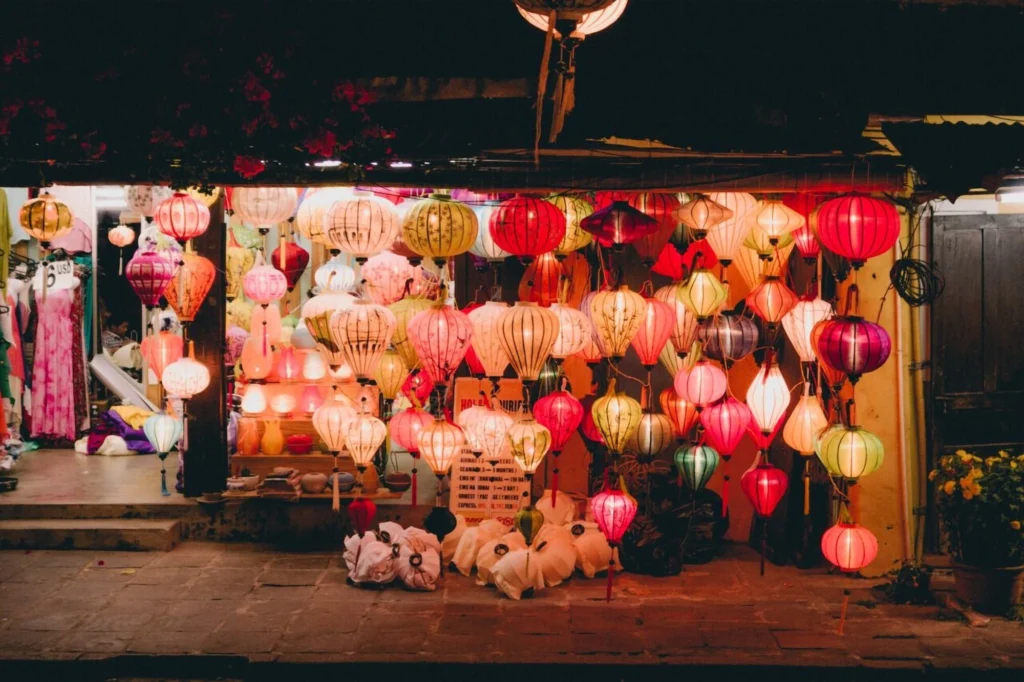
6. What to Pack for Your Vietnam Backpacking Route
- Documents & Money: Passport, e-visa printout, travel insurance, US$100 in small bills, Visa/Mastercard debit card.
- Clothing: Breathable quick-dry shirts, convertible trekking pants, lightweight rain jacket, swimwear, a warm layer for highlands.
- Footwear: Durable hiking shoes, comfortable sandals, water-ready flip-flops.
- Gear: 40–50 L backpack, dry sacks for electronics, headlamp, universal adapter, power bank.
- Health & Safety: Basic first-aid kit, personal medications, insect repellent, sunscreen, water purification tablets.
- Extras: Reusable water bottle, compact travel towel, waterproof phone pouch, snacks for long travel legs.
7. Best Time to Travel This Route
- September–October: Golden rice terraces in Mù Cang Chải and Pù Luông at peak color.
- March–April: Mild temperatures in the north, calm seas in Nha Trang, clear skies in Phú Quốc.
- Avoid: Central Vietnam monsoon (November–February rains) and northern fog/cold snaps (December–February).
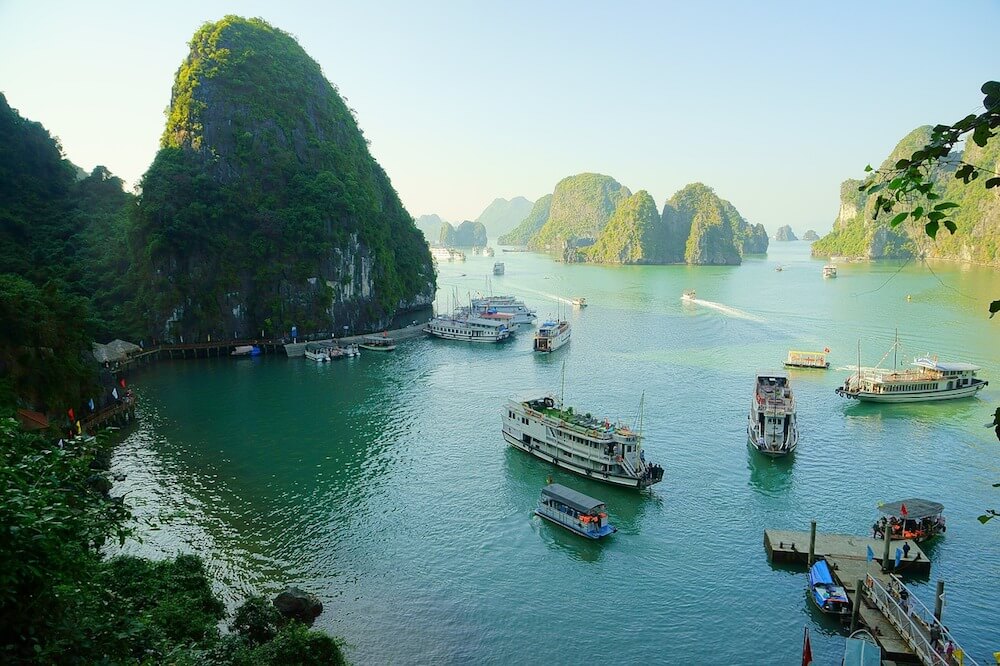
8. Safety & Cultural Etiquette
- Road Safety: Always wear a quality helmet, obey traffic rules, and avoid night driving on unfamiliar roads.
- Respectful Dress: Remove shoes in homes and temples; cover shoulders and knees at religious sites.
- Politeness: Use both hands when giving or receiving items; learn basic Vietnamese greetings (“xin chào,” “cảm ơn”).
- Responsible Tourism: Support community homestays, minimize single-use plastics, and respect wildlife and protected areas.
This comprehensive Vietnam backpacking route delivers the perfect blend of natural wonders, cultural immersion, and budget-friendly adventure in just 12 days. From the emerald carsts of Tràng An to the “golden season” terraces of Mù Cang Chải, from forest trails in Pù Luông to island paradises in Nha Trang and Phú Quốc, every leg of this journey promises unforgettable memories.
See more post: Vietnam Honeymoon: Ultimate Guide to the Top 5 Romantic Destinations, Planning & Tips

